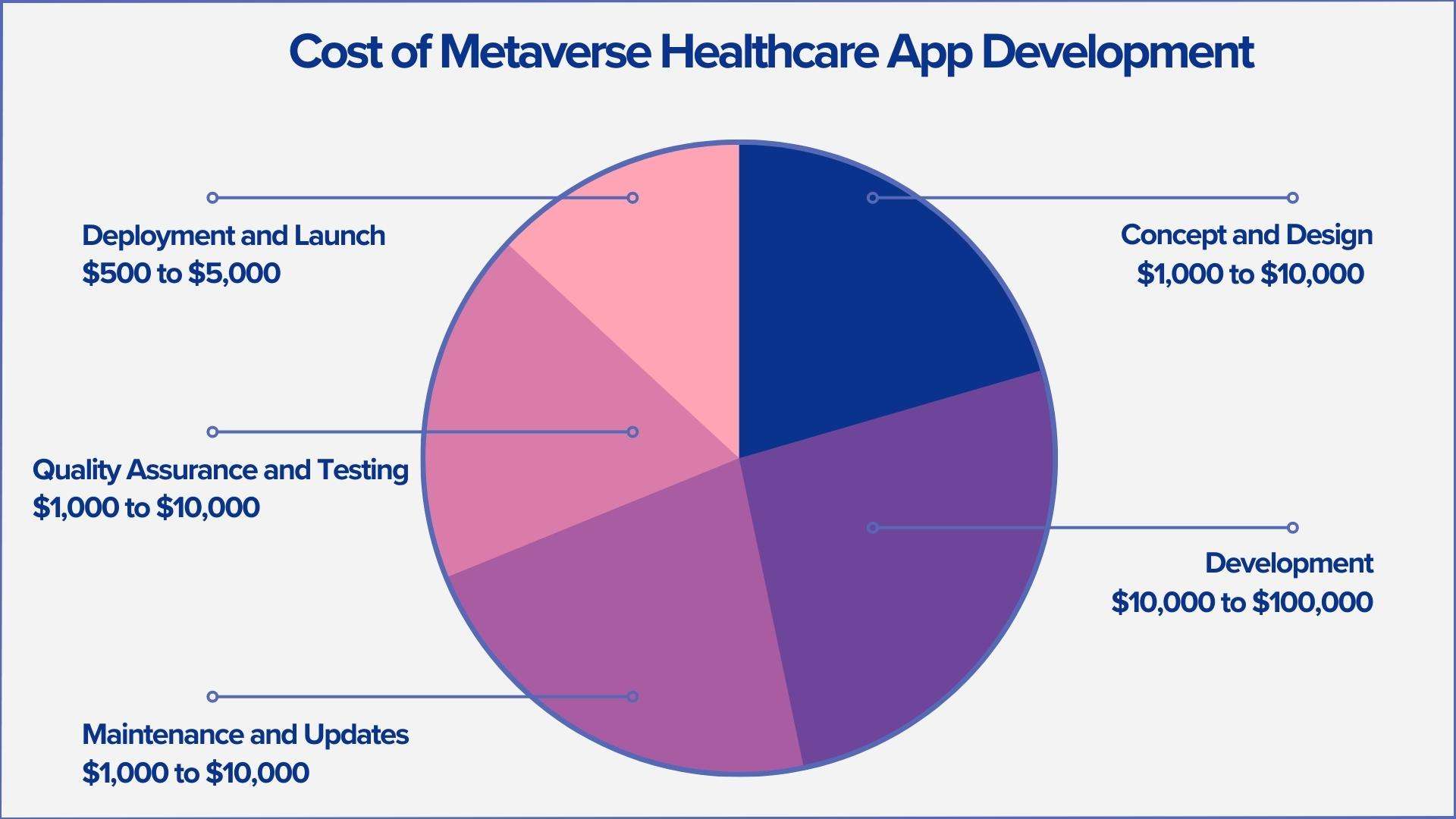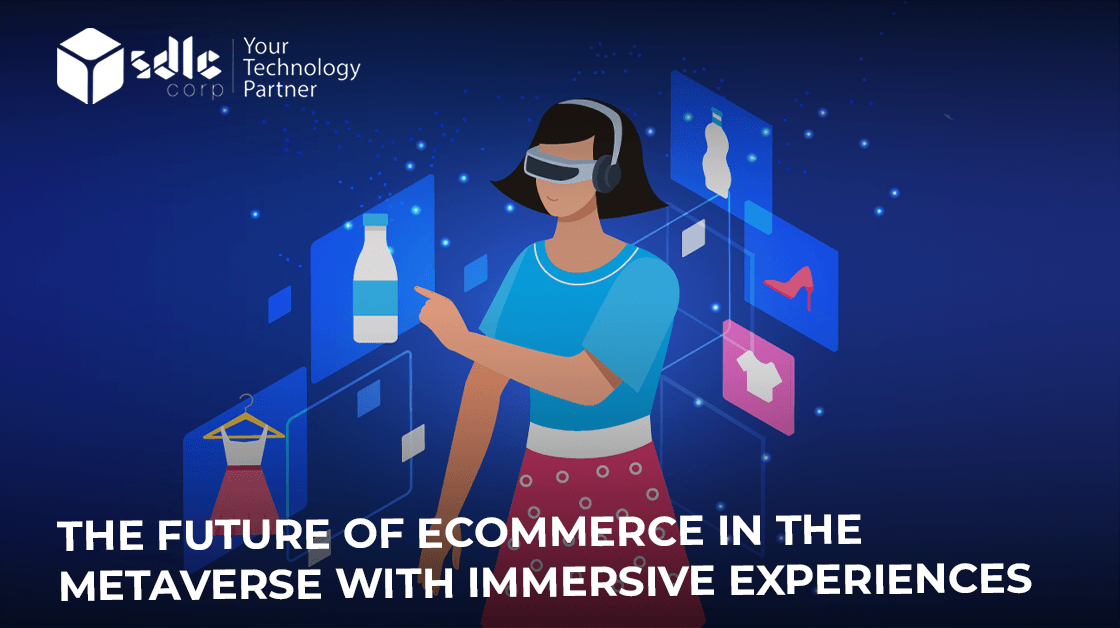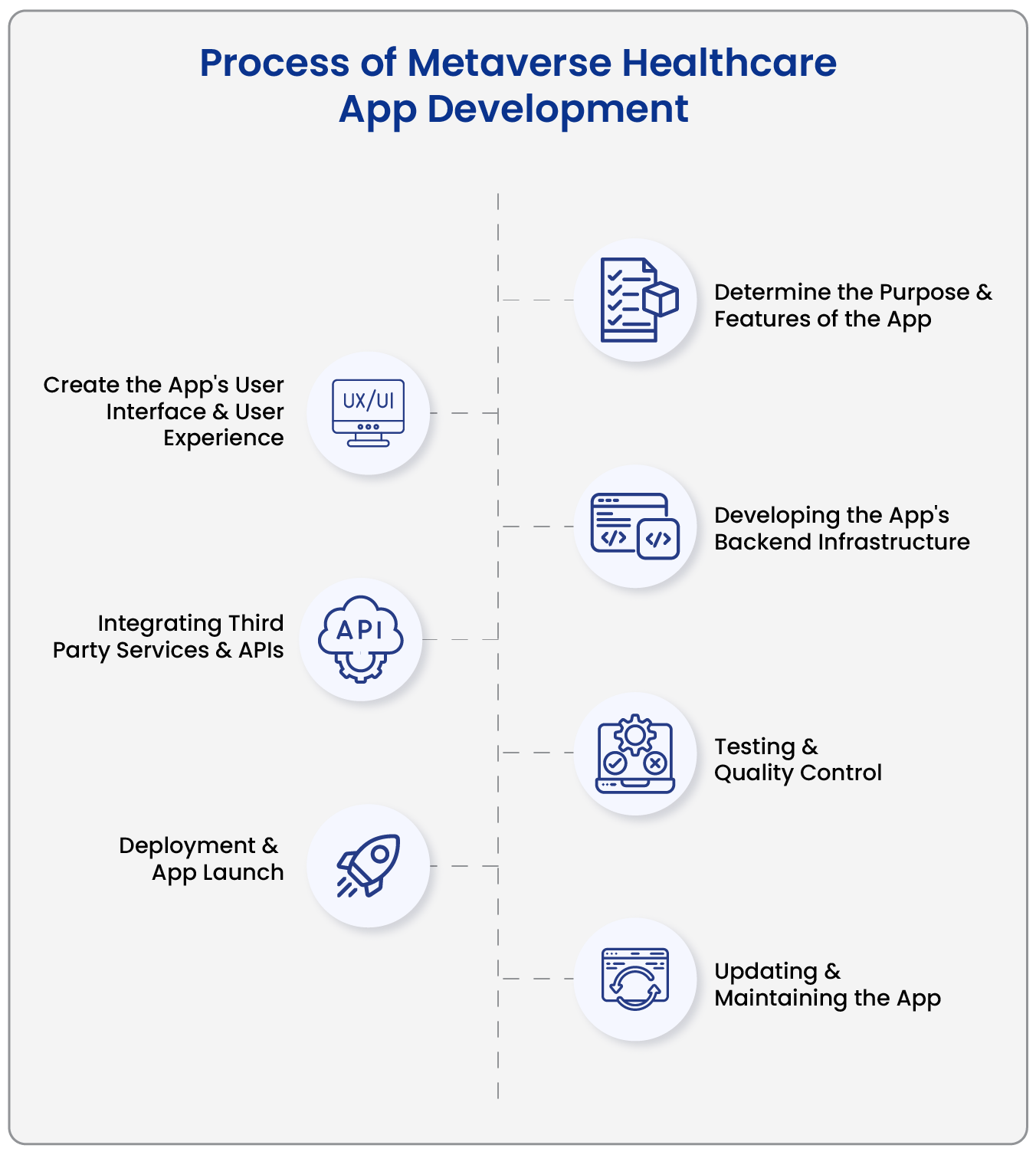OPPORTUNITIES, COSTS, AND PROCESS FOR METAVERSE DEVELOPMENT IN HEAALTHCARE
Metaverse in Healthcare: The Metaverse, is a virtual world in which people may interact with digital avatars to participate in a variety of experiences and activities, has lately garnered attention as a viable path for healthcare research. With the emergence of virtual and augmented reality technology, healthcare providers are investigating the potential benefits of using the Metaverse to improve patient experiences, enable remote healthcare delivery, and create novel training possibilities for healthcare workers.
However, Metaverse development in healthcare comes with both benefits and drawbacks. While the Metaverse’s potential benefits are exciting, developing and implementing this technology can be costly and time-consuming. Concerns like patient privacy, data security, and ethical considerations must also be addressed to ensure the safe and responsible use of the Metaverse in healthcare.
This article will look at the opportunities, expenses, and processes involved in Metaverse development in healthcare, as well as the obstacles and ethical issues that must be addressed to guarantee that this emergent technology is used responsibly.
Global Metaverse Healthcare Market
By the year 2030, it is anticipated that the global market for metaverse applications in healthcare would have grown at a compound annual growth rate of 35.28% and will have reached a valuation of $54.47 billion. It is anticipated that the growing use of augmented reality (AR) and virtual reality (VR) for executing complex surgical procedures with increased flexibility and precision will enhance overall market growth.

In addition to these considerations, the expansion of investment in the creation of metaverses for healthcare platforms is another factor that is contributing to the rise of the metaverse in the healthcare industry. Top companies are increasingly working together to produce augmented and virtual reality solutions that improve the entire medical procedures. Now, let’s take a look at the possibilities that the Metaverse presents to the healthcare sector. (Read more about How will the Metaverse Change the Healthcare Industry?)
Advances and Opportunities in Metaverse Healthcare
The healthcare business is always changing, and using the metaverse in healthcare is one of the newest trends. People can talk to each other in real time in the metaverse, which is a fictional world. It’s an immersive and dynamic space that could change the way healthcare is given. Here are six changes and chances in the metaverse of healthcare:
1. Telemedicine
Telemedicine is the use of technology to deliver healthcare services remotely. The metaverse can improve telemedicine by creating an immersive environment in which doctors and patients can engage. Patients, for example, can consult with doctors in a virtual exam room, and doctors can diagnose and treat patients using virtual medical equipment.
VRHealth is one of the many examples of a company leveraging the metaverse as a telemedicine platform. VRHealth is a medical technology business that generates virtual reality (VR) experiences. They provide a variety of virtual reality medical applications, including telemedicine.
Bring Your App Concept To Life With Our Skilled Team
2. Medical Education
Medical education is a critical component of the healthcare business. Medical students can benefit from an immersive learning experience in the metaverse by interacting with virtual patients and practising medical procedures. It can also provide opportunities for continuous education for medical practitioners.
Osso VR is a healthcare technology firm that creates virtual reality (VR) experiences for medical training and education. Their technology enables medical students, healthcare professionals, and even patients to participate in interactive, immersive training experiences that mimic real-world medical settings.
3. Mental Health
The metaverse can offer a secure and anonymous setting for persons seeking mental health care. It can offer licensed clinicians’ virtual therapy sessions, support groups, and self-help tools. It can also serve as a collaborative and sharing tool for mental health practitioners.
For example, a company called Limbix has developed a VR platform that provides immersive therapy for patients with conditions such as anxiety and depression. Another example is virtual reality meditation apps like TRIPP, which allow users to immerse themselves in tranquil virtual worlds to alleviate stress and anxiety.
4. Clinical Trials
Clinical trials are an important aspect in developing novel treatments and pharmaceuticals. By offering a platform for virtual trials, the metaverse can improve the clinical trial process. Virtual trials can minimise clinical trial costs and time, making it easier to evaluate new treatments and medications.
In clinical trials, one instance is the use of virtual patient avatars. Virtual avatars are being used by companies like Science 37 to deliver a more immersive and engaging experience for patients in clinical studies. The avatars can imitate real-life circumstances, allowing patients to gain a better understanding of their medical condition and treatment alternatives.
5. Health Monitoring
The metaverse has the potential to serve as a platform for remote health monitoring. It may be possible for patients to wear virtual sensors that monitor vital signs including heart rate, blood pressure, and oxygen levels. Doctors may track this data in real time, allowing them to diagnose and treat health problems before they become serious.
One example is the use of wearable technology and virtual reality (VR) to monitor and manage chronic conditions such as diabetes. For example, Bio Conscious Technologies has created a wearable gadget that monitors glucose levels and delivers the information to a virtual reality headset. The headgear can then visualise the glucose levels, allowing the wearer to better understand and control their condition.
6. Disaster Response
The metaverse can serve as a training and response platform for disaster response teams. It may simulate crisis circumstances virtually, allowing teams to practice their response plans. It can also serve as a platform for real-time emergency response coordination.
WorldViz has created a virtual reality platform that enables realistic simulations of crisis conditions such as earthquakes, fires, and floods. The platform enables emergency responders to train in a secure and controlled setting, increasing their preparedness and efficacy in real-world situations.
Revolutionize healthcare with Metaverse technology
Metaverse Healthcare App
Metaverse healthcare apps use virtual reality (VR), augmented reality (AR), and other immersive technologies to create new and inventive ways for consumers and healthcare providers to manage health and wellness.
Patients can use Metaverse healthcare apps to get personalised treatment plans, participate in immersive therapy, and check their health in real time. These apps can be used by healthcare providers to deliver remote treatment, training, and diagnostics.
A diverse team of developers, designers, and healthcare professionals that understand the needs of both patients and providers is required to create Metaverse healthcare apps. Designing a user-friendly interface, integrating data gathering and analytic tools, and testing the app for usefulness and usability are all part of the development process.
Cost of Metaverse Healthcare App Development
The cost of producing a healthcare app using Metaverse technology can be divided into various segments, each with its own set of costs. Here’s a breakdown of the many steps and how much they might cost:

Concept and Design
This is the first stage of the app development process, during which the concept is determined and the design of the app is constructed. The cost of this stage can vary depending on the app’s complexity and design needs. A simple app design can range from $1,000 to $5,000, while a more complex design can cost up to $10,000.
Explore our other insights!

The Future of eCommerce in the Metaverse with Immersive Experiences
The metaverse is reshaping the eCommerce industry in ways that were once unimaginable. With creative firms like Warby
Development
Development entails writing code for the app and integrating Metaverse technologies. The cost of this stage is determined by the number of features and functionalities required in the app, the complexity of the Metaverse technology, and the development team’s hourly rate. App development costs might range from $10,000 to $100,000 on average.
Quality Assurance and Testing
After development, the app must be rigorously tested to ensure that it functions as intended. The cost of quality assurance and testing varies according to the complexity of the app and the extent of testing necessary. This step might cost anywhere between $1,000 and $10,000.
Deployment and Launch
After the software has been developed and tested, it must be published to the app store or other platforms. The cost of deployment and launch is determined by the platforms to which the app is being distributed as well as any associated costs. The cost of deployment and launch might range from $500 to $5,000 on average.
Maintenance and Updates
After the app is released, it will require continuous maintenance and updates to guarantee that it is functioning and up to date. The cost of maintenance and updates varies based on the complexity of the programme and the level of assistance required. Maintenance and improvements might cost anywhere from $1,000 to $10,000 per year on average.
Overall, the cost of producing a healthcare app with Metaverse technology varies greatly based on the complexity of the app, the Metaverse technology is chosen, and the hourly rate of the development team. Working with an experienced development team that can provide realistic cost estimates and verify that the app meets all functional requirements is critical.
Building the metaverse of tomorrow, where virtual experiences redefine the way we live and connect.
Process of Metaverse Healthcare App Development
Creating a metaverse healthcare app entails several phases and processes. We will go over the stages and considerations that are necessary for constructing a functional and user-friendly metaverse healthcare app in this detailed style.

Step 1: Determine the Purpose and Features of the App
The objective and features of a metaverse healthcare app should be defined first. This includes determining the app’s primary capabilities, identifying the target audience, defining the health-related concerns the app will solve, and defining the app’s target audience. Patients, for example, may be able to use the app to book appointments, track their prescription use, or access their medical data.
Bring Your App Concept To Life With Our Skilled Team
Step 2: Create the App's User Interface and User Experience
After defining the app’s purpose and features, the following stage is to design its user interface and user experience. The app’s design should be intuitive and user-friendly, making it simple for users to navigate and get the information they require. This includes creating the layout, colour palette, typography, and other aesthetic elements for the app.
Step 3: Developing the App's Backend Infrastructure
Following the creation of the app’s user interface, the next stage is to create its backend architecture. This includes developing the database, server, and application programming interface (API) for the app. The database should be designed to safely and efficiently store the user’s health-related information. The server should be able to handle large traffic loads while also delivering consistent and quick access to the app’s data. The API should be developed such that the app and its backend infrastructure can communicate in real time.
Step 4: Integrating Third-Party Services and APIs
The metaverse healthcare app may need to interact with multiple third-party services and APIs, such as EHR systems, healthcare providers, or insurance organisations. Integrating these services necessitates the design and development of interfaces that allow the app to securely and efficiently communicate with other systems.
Step 5: Testing and Quality Control
After developing the app’s backend infrastructure and integrating third-party services, the following stage is to extensively test the app’s functionality and user experience. This entails running a variety of tests to guarantee the app’s operation, usability, and security. Before releasing the software, quality assurance testing should be undertaken to acknowledge and resolve any issues.
Step 6: Deployment and App Launch
The app is ready for deployment and launch after the testing and quality assurance phases are completed. The app should be installed on a secure and dependable platform capable of handling the anticipated traffic load. During the launch phase, the app is promoted through numerous marketing channels in order to attract and engage users.
Step 7: Updating and Maintaining the App
The final stage in creating a metaverse healthcare app is to routinely maintain and update it. This includes tracking the app’s performance, resolving any problems that develop, and updating its functionality and features to satisfy user needs and remain competitive in the market. Maintenance and updates are required on a regular basis to maintain the app relevant and working for users.
A metaverse healthcare app necessitates careful planning, design, and development. The app should be developed to fulfill the needs of its target audience, provide an intuitive user interface and user experience, and safely and efficiently integrate with external systems. Before the app is deployed and launched, thorough testing and quality assurance should be undertaken, and frequent maintenance and upgrades are required to maintain the app current and working.
Conclusion
The Metaverse offers substantial prospects for the healthcare industry, including the creation of innovative applications that can improve patient outcomes, lower costs, and increase access to care. There are, however, considerable costs associated with developing and deploying Metaverse healthcare solutions, such as the requirement for advanced technology, trained developers, and continuing maintenance and support. To design and operate Metaverse healthcare solutions successfully, it is critical to carefully analyse the costs, benefits, and processes involved, as well as to collaborate with experienced partners who can provide the expertise and support required to assure success.
FAQs
Ready to create your pet care app like Rover? Contact us today to discuss your app development needs and get started on the path to success!
1. What is the Metaverse, and what does it have to do with healthcare?
The Metaverse is a virtual environment that mixes physical and digital elements. The Metaverse can be utilised in healthcare to provide new solutions that enhance patient outcomes, save costs, and increase access to care.
2. What are the advantages of creating Metaverse healthcare solutions?
The potential to deliver remote care, better patient participation and education, and improve collaboration among healthcare practitioners are all advantages of metaverse systems for healthcare.
3. What are the expenses of developing and deploying Metaverse healthcare solutions?
The expenses of developing and deploying Metaverse healthcare solutions can be substantial, owing to the requirement for complex technology, qualified developers, and ongoing maintenance and support.
4. How can healthcare organizations design and deploy Metaverse systems successfully?
To successfully develop and operate Metaverse solutions, healthcare organisations must carefully assess the costs, advantages, and processes involved, as well as collaborate with skilled partners that can provide the expertise and assistance required.
5. What are some instances of Metaverse healthcare solutions that have been created and deployed successfully?
Successfully created and deployed Metaverse healthcare solutions include virtual reality therapy for mental health, telemedicine platforms for remote consultations, and patient education and engagement applications.













